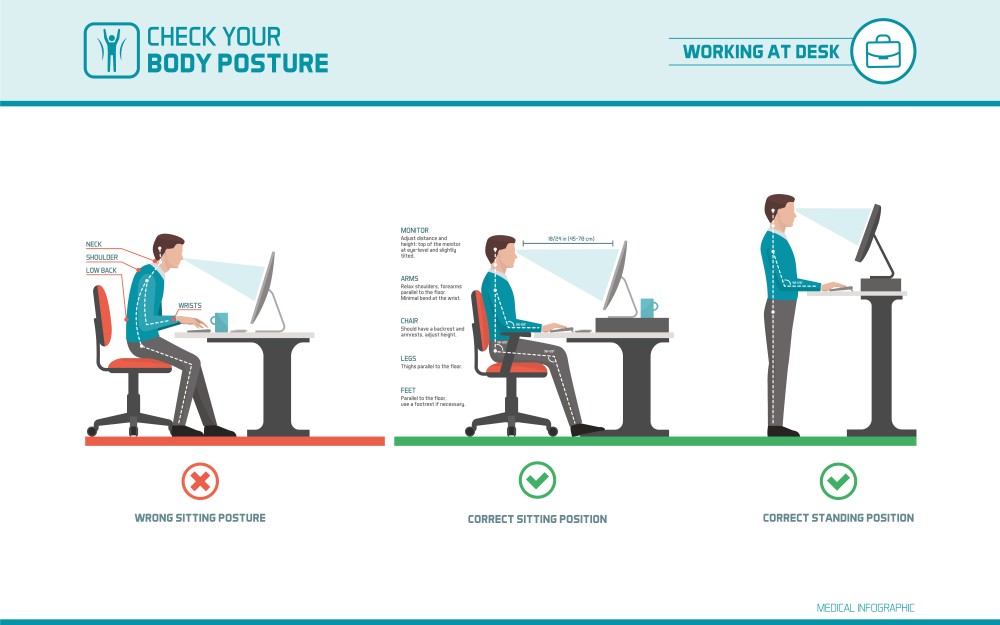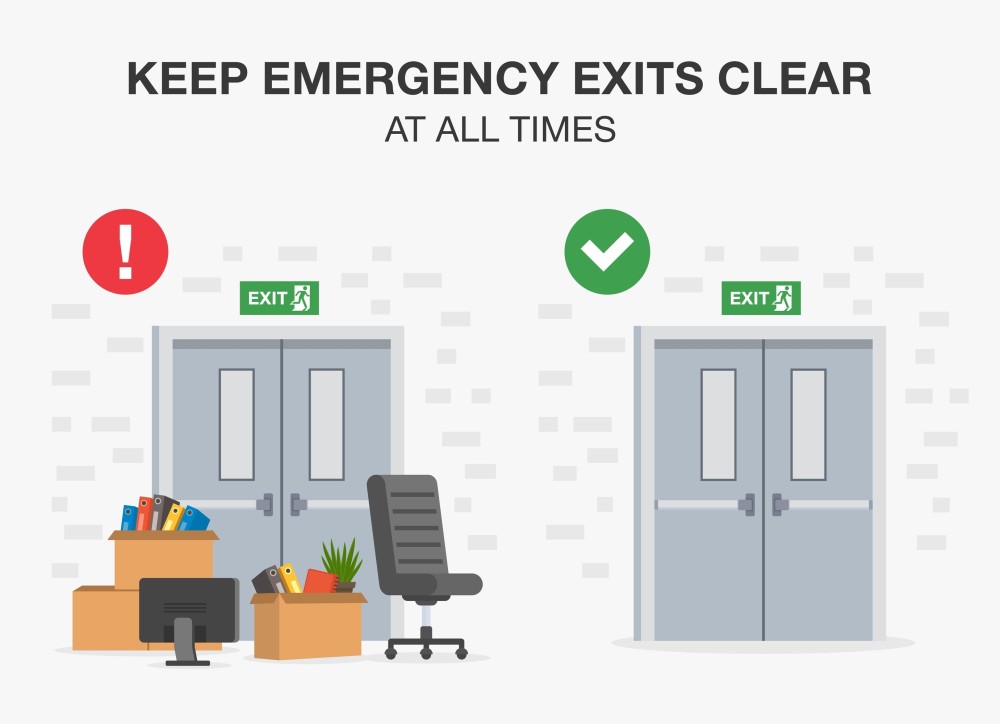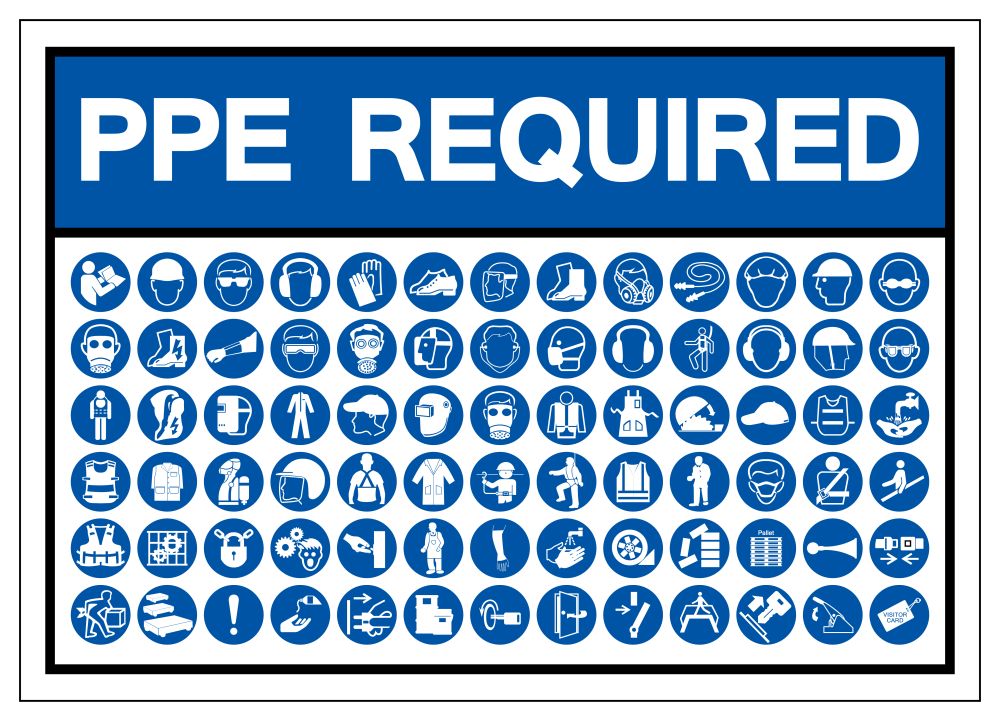No matter how many workplace safety guidelines and practices you’ve set in place, they won’t do any good if your employees aren’t aware of and invested in following them. The safest work environments occur when employees at all levels of the organization work together to communicate and adhere to the safety standards set in place.
Here are the top eight workplace safety tips every employee should know in order to encourage the shared responsibility of all throughout your organization.
#1 Be Aware of Your Surroundings
Every job site has inherent dangers — whether that’s heavy machinery, conveyor belts, or even tripping over items in the office. The best way to keep yourself and others safe is to identify the hazards in your workplace and be aware of your surroundings. The more familiar you are with your tasks and workplace, the more aware you’ll be of the potential hazards. Knowing your surroundings and potential hazards will help you and your co-workers identify how to minimize the risk and avoid workplace injuries.
#2 Keep Correct Posture
We’ve all heard that age-old saying, “Lift with your legs — not your back,” but keeping correct posture refers to more than just employees who lift things. Maintaining your body in a neutral posture is important to minimize the stress placed on your body even if you work at a desk. You need to make sure you have good posture to avoid back problems, neck pain, and even carpal tunnel.

Of course, if you do have to lift something, always size up the load, keep your back straight, and lift with your legs. And, if you ever need to lift something you think might be heavy, take a few extra seconds to find a partner or mechanical device that can help you. Whether it’s a forklift, dolly, lift assist, or your office neighbor Dave, your back is worth those extra few seconds.
#3 Take Regular Breaks
It’s important that you always take your regular breaks. The Occupational Safety and Health Administration (OSHA) has put them in place for a reason: tired workers are the most prone to causing an incident.
The more tired you are, the less aware you are of your surroundings and the more at-risk you are for an injury. Take the breaks you’re given on a regular schedule to keep yourself fresh and try to schedule your more difficult tasks for the beginning of your shift when you’re most alert.
#4 Never Take Shortcuts on Procedures
Workplace procedures exist to keep employees safe, so using every tool and machine according to their instructions is critical. This is especially true for operations that require heavy machinery.
Shortcuts lead to injury and aren’t worth the small amount of time they might save you. Be sure you’re always using the right tool for the job and that you’re using it correctly.
#5 Be Aware of New Safety Procedures
When your company purchases a new machine or updates training, it’s important to become familiar with the latest safety procedures.
Workplace safety is a team effort. An employer is responsible for providing the proper training, a supervisor is responsible for assigning training time, and an employee is responsible for taking training and understanding safety procedures so they can be implemented properly. Always ask clarifying questions before operating a new machine if you don’t understand a safety procedure.
#6 Keep Emergency Exits Clear
Never place anything in front of an emergency exit door, even if it’s only for a few minutes. While this might sound like a no-brainer, it’s surprising how many ladders, carts, and even forklifts get set in front of emergency exits. Also ensure pathways to equipment emergency shut-offs are clear in case something needs to be powered down immediately.

#7 Report Unsafe Conditions
The best way to stop unsafe working conditions from happening is to report them to supervisors as soon as you notice them and then help be part of the solution. Your supervisor is legally obligated to provide all employees with a safe working environment, but this is only possible if employees make them aware of those conditions.
In order to keep yourself and other employees safe, it’s important to always report any hazardous situation or behavior immediately. A positive safety culture is created when everyone works together to find a solution that prevents unsafe conditions from occurring again in the future.
#8 Always Wear Personal Protective Equipment
Finally, ensure you’re always wearing the personal protective equipment (PPE) provided to you by your employer. For example, when handling some chemicals you may only need to wear safety glasses and a pair of nitrile gloves. In other cases, you may need to wear different or additional protective gear.
PPE can cover a range of equipment — from earplugs to hard hats to chemical suits — and they’re all incredibly important. Whatever type of PPE your employer gives you, it exists and is required to be worn for a reason. Wearing the correct PPE for your job is another great way to create a safe workplace for yourself and others.

Create a Safe Workplace For Your Team. Work with eSafety.
While all employees should do their best to understand and implement workplace safety best practices, it’s up to managers and business owners to ensure their employees have the training they need to reduce risk. If you need help creating a positive safety culture in your organization, turn to eSafety for online training.
The eSafety learning management system gives you the ability to schedule, train, and report on your company’s training needs with helpful, easy-to-use workplace safety training courses that cover a variety of topics — from Lockout/Tagout, to Diversity in the Workplace, to Spill Response Awareness. It’s a comprehensive training platform that assists you in keeping your employees safe.



